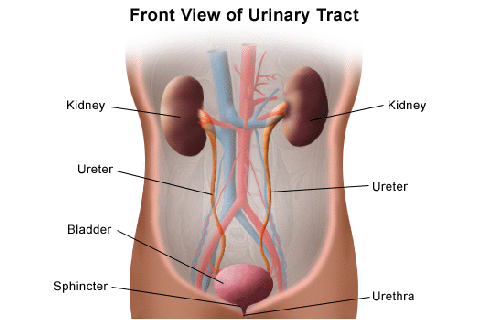Many different living organisms produce the waste product urea, also called carbamide. In humans, it is the main organic element of urine, but where is urea produced? And are there any common problems related to the urea? Read on to find your answers.

Where Is Urea Produced?
Urea is the end product of a series of biochemical reactions, and the urea production occurs at liver, then is transported to kidney, at last, excreted as urine.
The urea is produced from ammonia and carbon dioxide. Protein within the diet is broken down to these constituent amino acids, which are then converted to carbon dioxide, water, and ammonia in the liver. However, ammonia is highly toxic, so it must be removed from the system as soon as possible. In humans, enzymes and carrier molecules in the liver metabolize the poisonous ammonia and carbon dioxide to non-toxic urea. This is then safely taken via the blood to be filtered through the kidneys. It then travels to the bladder, and is excreted as urine.
Common Problems Related to Urea
Aside from the question of "where is urea produced?" there are some common problems related to urea that should be noticed. Urea is a natural diuretic, bringing water into the kidneys in the loop of Henle within the nephron section of the kidney. Blood urea levels are assessed using the Blood Urea Nitrogen (BUN) measurement. High BUN levels may be seen in patients with urinary tract obstructions, heart circulation issues, kidney failure, and other kidney disorders.
1. Ornithine Transcarbamylase (OTC) Deficiency
OTC deficiency is the most frequent human urea cycle condition, and being an X-linked disorder, is predominantly seen in men and boys. OTC converts ornithine and carbamoyl phosphate to citrulline, and the OTC is the last enzyme involved in the proximal part of the urea cycle. When OTC is deficient, hyperammonemia (excess ammonia in the blood) can occur.
Symptoms
Hyperammonemia can have the following symptoms:
- Lack of appetite
- Vomiting
- Loss of awareness, drowsiness, and sleepiness
- Quickened or heavy breathing
- Disorientated feelings
- Irritability and aggressive behavior
- Hand tremors (although this is rare)
- Cerebral edema
- Coma
If the hyperammonemia is not treated effectively, it can result in death. So if you observe some of the symptoms mentioned above, you should see a doctor as soon as possible.
Treatment
When the patient experiences OTC deficiency symptoms, the following treatments are recommended:
- Completely cut out protein from the diet and increase the amount of fat and carbohydrate to compensate. This counteracts the tendency for using amino acids from muscles as an energy source.
- Provide arginine, sodium phenylacetate, and sodium benzoate through a drip.
- If the patient has fallen into a coma due to hyperammonemia, hemodialysis can quickly remove ammonia from the blood.
- For long-term care, you should see a dietician, who will be able to provide care in a specialist facility with laboratory assessment available. It is vital that you strictly adhere to all the dietary and drug advice to prevent the condition worsening.
2. Urea Cycle Disorders
In the urea cycle, nitrogenous waste products from protein metabolism are taken from the blood and catabolized via a series of biochemical reactions to urea. This is usually removed from the body via urine. Urea cycle defects are genetic conditions affecting the enzymes in the urea cycle. This leads to the build-up of highly toxic ammonia in the system.
Symptoms
Stress and illness can predispose patients of any age to mild/partial enzyme defects, which lead to small increases in blood ammonia levels. However, it may take months or years before this is identified. Symptoms of urea cycle disorders include:
- Reduced appetite
- Severe fatigue
- Strange behavior
- Continual vomiting
- Issues with sleep: Problems falling or remaining asleep, excessive sleep, falling asleep in the day, and other abnormal sleep behavior
- Psychosis: Breaking away from reality
- Delusions: irrational beliefs, even when confronted with facts
- Hallucinations: Perceiving images or sounds that are not there
Treatment
Treatment for uric acid cycle defects involves the following:
- Lower blood ammonia levels
- Take drugs to help ammonia excretion
- Cut nitrogenous foods from the diet
- Getting more calories from carbohydrate and fat
- Preventing brain damage
3. Uric Acid Issues
Most mammals use uricase enzymes to metabolize the uric acid into a soluble compound. However, humans and great apes have evolved an inactive form of the uricase enzyme. This predisposes us to kidney stones and painful gout in the joints, caused by needle-shaped sodium urate crystals.
Besides the risks of kidney stones, uric acid is filtered through the glomeruli, but most of it is reabsorbed. This may seem counterproductive, but it can protect us in two ways: Uric acid functions as a powerful antioxidant, defending cells against harmful reactive oxygen species; Uric acid is highly concentrated in the inside of cells. When cells are damaged and release their contents, sodium urate crystals start to form. This enhances the immune response by stimulating neighboring dendritic cells to present antigens to T cells.
